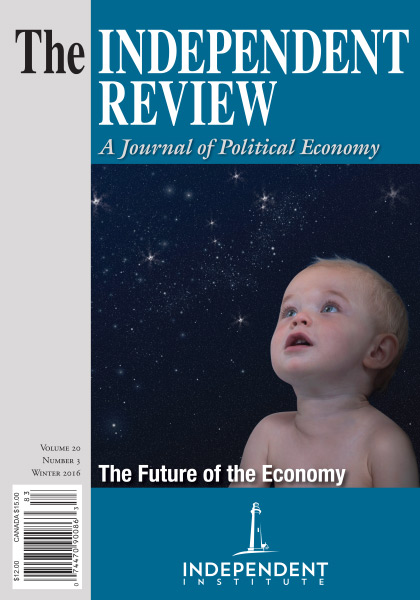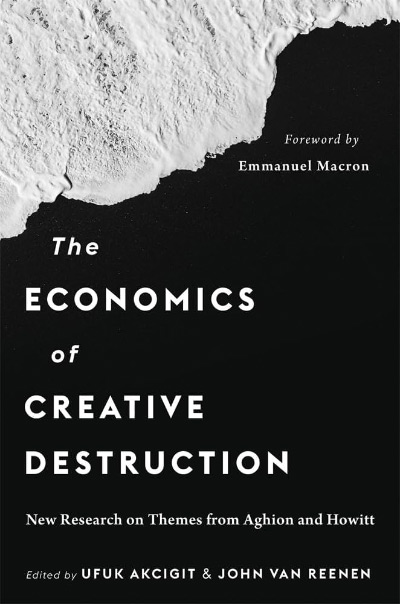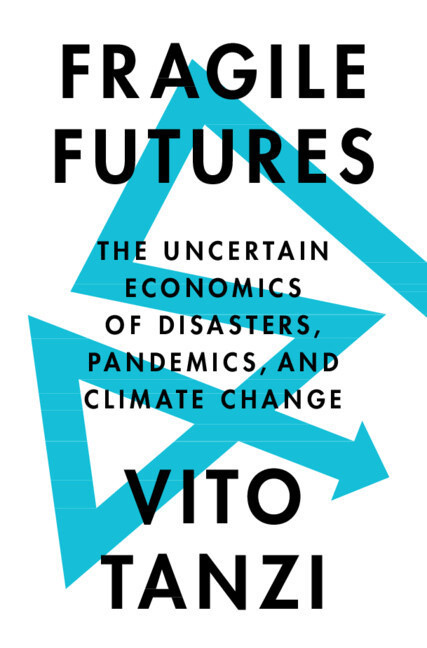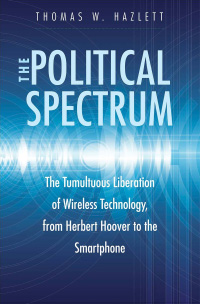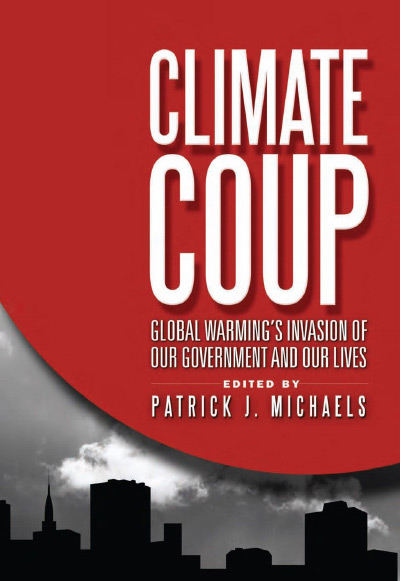Do (or ought) individuals sacrifice their own fitness for the good of others? Theologians cite scripture as proof that altruistic almsgiving is demanded by God. Philosophers argue that altruism is in part a moral duty and in part a matter of eudaemonic ethics. Economists view altruism as an aspect of nonmarket behavior that operates within families, but typically not within firms. Biologists of various stripes (evolutionists, geneticists, behaviorists, etc.) observe that altruism occurs roughly in proportion to kinship, but they often acknowledge as well the need for a better explanation of the phenomenon. A small but perhaps growing minority of biologists claim that a comprehensive explanation is at hand.
In Does Altruism Exist? biologist David Sloan Wilson argues that altruism in its purest form exists where “group-level functional organization evolves primarily by natural selection between groups” (p. 21). More generally, he asserts that (1) “[i]f by altruism we mean traits that evolve by virtue of benefitting whole groups, despite being selectively disadvantageous within groups, then altruism indubitably exists and accounts for the group-level functional organization that we see in nature” (p. 141);(2) “[a]ltruism also exists as a criterion that people use for adopting behaviors and policies, with the welfare of whole groups in mind rather than more narrow individual and factional interests” (p. 141); and (3) “[f]inally, if by altruism we mean a broad family of motives that cause people to score high on a PROSOCIALITY scale [measuring ‘altruism at the level of action’] by agreeing with statements such as ‘I think it’s important to help other people,’ then altruism also exists, although more in some people than others” (p. 141, capitalization in original).
Readers who are predisposed toward Wilson’s views will find this book affirming. Progressives and communitarians will welcome its proffering of scientific support for neoliberal political agendas, as will individuals seeking scientific arguments by which to claim genetic superiority for particular ethnic and religious groups. Skeptics, by contrast, are unlikely to be persuaded that Wilson’s book presages a Kuhnian paradigm shift within biology. Previously uninitiated readers may be confused by the book’s discursiveness.
This work is the first underwritten in the John Templeton Foundation book series Foundational Questions in Science. Wilson, who has been publishing on evolution, altruism, and related topics since the 1970s, holds a distinguished professorship in biology and anthropology at Binghamton University. He also heads a research organization, the Evolution Institute, that analyzes and interprets contemporary social issues through the lens of Darwinian natural selection. He characterizes this book as being the first of its kind to resolve altruism’s evolutionary status and to link natural selection with public policy.
Wilson characterizes the ostensible importance of his work along the following lines: “If we want to solve the most pressing problems of our age, such as world peace and global environmental sustainability, then more cultural evolution is required and it must be guided by a sophisticated knowledge of evolution. . . . Future social arrangements need to be based more on intentional planning than ever before. This does not necessarily mean centralized planning; it can also include the smart design of decentralized processes. . . . The selection of best practices must be intentional because we cannot wait for natural selection and there is no process . . . to select for functional organization at the planetary scale. . . . [W]e need to become wise managers of variation and selection processes . . . [and] we must choose policies with the welfare of the whole world in mind” (pp. 88, 114, 146, 149, emphasis in original). His rhetoric implies progressive political liberalism and is faintly reminiscent of progressive eugenics.
The cornerstone of Wilson’s grand design is a controversial theory of evolution called “multilevel group selection.” He surveys the relevant scientific literature in a previous book, Darwin’s Cathedral: Evolution, Religion, and the Nature of Society (Chicago: University of Chicago Press, 2002). Conventional thinking about evolution centers on the fitness of “selfish genes” and individual organisms. Group-selection theory goes further by claiming that natural selection has predisposed human individuals to sacrifice their own fitness for the good of their group regardless of whether the beneficiaries are among the altruist’s genetic relations. The explanatory mantra coined by Wilson and his one-time coauthor Edward O. Wilson (no relation) is: “Selfishness beats altruism within groups. Altruistic groups beat selfish groups. Everything else is commentary” (qtd. on p. 23). By contrast, the economist Gary Becker once argued that evolutionary “models of group selection [including the variant called ‘kin selection’] are unnecessary since altruistic behavior can be selected as a consequence of individual rationality” (The Economic Approach to Human Behavior [Chicago: University of Chicago Press, 1976], p. 284). These alternative perspectives are not equivalent.
Group-level selection is immediately counterintuitive. How, many biologists wonder rhetorically, could a trait such as self-sacrificial altruism arise and remain evolutionarily stable so long as selfishness trumps it? The old-school biologist Richard Dawkins addresses contradictions of this sort in his classic book The Selfish Gene (Oxford: Oxford University Press, [1976] 1989). He asks, for example, how group-level selectionists manage to determine which evolutionary level is the decisive one: “If selection goes on between groups within a species, and between species, why should it not also go on between larger groupings [such as ‘between lions and antelopes’]?” (p. 10). Becker, by comparison, stressed a separate, economic consideration. Reciprocal altruism operates through mankind’s evolved propensities for cooperation, reciprocity, and exchange and flourishes naturally wherever human individuals are at liberty to interact spontaneously for mutual gain. These heritable, positive-sum propensities entail no sacrifice of individual fitness. Instead, they represent Adam Smith’s “invisible hand,” whose operation, as Smith explained in The Wealth of Nations, “frequently promotes [the interest] of society more effectually than when [the altruistic individual] really intends to promote it” ([Chicago: University of Chicago Press, (1776) 1976], pp. 1:477–78). Wilson, in contrast, downplays the significance of economic behavior: “nonhuman societies provide outstanding examples of the invisible-hand metaphor when they are products of society-level selection but not otherwise. Higher-level selection is the invisible hand” (p. 106, emphasis of “nonhuman” added).
Some of the confusion over altruism’s place in human evolution and behavior is attributable to language. The term altruism entered the lexicon in 1851 through a book by the French social thinker Auguste Comte, Systeme de politique positive (Paris: n.p., 1851). Comte sought to systematize mankind’s apparent concern for the welfare of others by replacing religious dogma with a “scientific” moral system. His scheme failed for the reasons F. A. Hayek elaborated in his book The Counter-Revolution of Science: Studies on the Abuse of Reason (Indianapolis: Liberty Press, [1952] 1979). Undaunted, Wilson proposes to “relaunch” a broadly Comptean social scheme that is “centered on the concept of functional organization, not [on] altruism per se” (p. 143). Altruism is merely one element in his grander design.
Wilson’s views on the biology of pure altruism echo a theory developed in the 1960s and 1970s by an eccentric chemist named George Price, whose ideas about evolution and genetics developed contemporaneously with work by the prominent biologists John Maynard Smith and William Hamilton. Wilson devotes a chapter to demonstrating the “equivalence” between Hamilton’s kinship-based theory of “inclusive fitness” and Price’s theory of group selection. Historian and philosopher of science Oren Harman tells Price’s story well in his book The Price of Altruism: George Price and the Search for the Origins of Kindness (London: Vintage, 2010). Price saw a social connection between the success of the few and the general prosperity of all. He became consumed by the idea that altruism can be propagated genetically. His goal was to develop a theory that explained how pure altruism, which ineluctably reduced individual fitness, might nevertheless evolve through natural selection. His work culminated in an elegant statistical equation describing a hypothetical case in which the effects of natural selection are stronger between groups than within them. The equation’s key terms require that cultural elements offset the penalty that natural selection extracts for the sacrifice of individual fitness. Pure altruism is heritable, by Price’s terms, so long as a few nice guys finish last.
Wilson offers a simple numerical illustration of group-selection theory in lieu of a concrete example (p. 38). The illustration doesn’t quite match the accompanying text, but no matter. Wilson has “rigged the numbers to produce this result . . . [by toting up] the fitness costs and benefits in a certain way to arrive at the bottom line of what evolves in the total population. . . . The perceptive reader might challenge the legitimacy of calculating evolutionary change at the level of the total population. After all, if the groups remain isolated for a sufficient number of generations, the A-types [altruists] will go extinct anyway” (p. 39). Altruists therefore are assumed to self-sacrifice for the good of the many. At the same time, too many altruists apparently would spoil the illustration: “If we could automatically turn everyone into pure altruists, human society might well collapse despite their [sic] best intentions” (p. 142). Wilson offers no theory for determining the optimal number or proportion of altruists in real life.
Altruism, in common parlance, has come to mean “[i]ntentional action ultimately for the welfare of others that entails at least the possibility of either no benefit or a loss to the actor” (p. 4). This definition is markedly anthropocentric by the usually rugged standards of biology. Consider the altruistic behavior of certain spider species (for example, Stegodyphus lineatus) whose females simultaneously nourish their offspring and awaken their hunting instincts by encouraging them to devour the mother (“matriphagy”), which the spiderlings do with great relish while encountering only nominal resistance. Altruism of this sort is the result of natural selection having hit randomly upon a scheme that perpetuates a particular species. The female spider’s action is intentional in the sense that natural selection has programmed her to behave as she does. The offspring of any female opting out of this behavior would perish, thereby ensuring that the cannibalistic instinct progresses into future generations. The human standard for altruism is wishy-washy by comparison, appropriately so. Mankind has evolved a level of behavioral flexibility that is wrought by such biologically evolved capacities as rationality, trust, sociability, cooperation, reciprocity, exchange, language, and symbolic thought. Accordingly, altruistic behavior among humans tends to be deliberative rather than instinctive.
The anthropocentric definition of altruism given in the previous paragraph entails a moral component that is lacking both in nature and in Wilson’s overarching philosophy. Pure altruism expresses the virtue of selflessness, a quality that is lost at the point where seemingly altruistic behavior becomes prudential. Moral thinking informs theological and philosophical conceptions of altruism as a duty owed to other individuals and perhaps also to God. It is not merely a strategy for personal advancement. Humans tend to resent smarmy, self-interested behavior of the sort that Rousseau termed “amour propre”—that is, the individual’s overt concern for his position in the world—notwithstanding that such behavior often serves as a means by which individuals signal their willingness, desire, and fitness to act cooperatively. Wilson begins his discussion on a moral note: “Altruism is a concern for the welfare of others as an end in itself” (p. 3). The discussion quickly turns consequentialistic. The results of an action, rather than its underlying motivation, are what matter to Wilson: “[O]ur preference for some thoughts and feelings over others is based primarily on the actions they produce. There is no other reason to privilege thoughts and feelings that count as altruistic over those that count as selfish” (pp. 8–9). By this standard, there also is no reason to privilege voluntary acts of kindness over coerced simulacra. Wilson is silent on this point.
Wilson offers several reasons why individuals might choose to act altruistically: “(a) I think it’s the right thing, (b) I take pleasure in your pleasure, (c) I regard it as my ticket to heaven, (d) I am trying to improve my reputation, (e) I’m trying to put you in my debt, or (f ) I’m being paid to do it” (p. 8). An additional point might be (g) I desire to affect your behavior, perhaps even for what I imagine to be your own good. Wilson raises in passing the example of soldiers falling on hand grenades to protect their comrades (p. 61), which suggests yet another reason for action: (h) I have been socially conditioned to do it. Rationales of this sort make the world go around but without materially affecting natural selection.
Evolution aside, Wilson draws upon research by the political economist Elinor Ostrum regarding the methods by which cooperative groups of humans solve common-pool resource problems. Wilson likens these groups to complex, multicellular organisms—“a highly regulated society of cells that is elaborately organized to withstand the onslaught of cheating and exploitation from within” (p. 49). The Spencerian social challenge, as Wilson sees it, is to discover similarly naturalistic methods for regulating large-scale organisms (that is, human groups of groups of groups of groups . . . ) in a manner that prevents selfish, low-level disruptions from sabotaging top-level collective efforts. Wilson notes that control mechanisms in nature do not always entail centralized planning and top-down regulation. He continues along Hayekian lines by noting that centralized methods of control are likely to fail: “Human social systems are so complex that no one knows how they work, and even the best-formulated plans are likely to fail due to unforeseen consequences. The solution to this problem is to experiment with new social arrangements, monitor naturallyoccurring variation,andcautiouslyadopt what works.... There is no way for this functional and mechanistic complexity to be understood in terms of altruism or selfishness, which is why both concepts must yield center stage to the concept of organism” (pp. 146, 144, emphasis in original). Much of Wilson’s discussion addresses the spontaneous rise of cooperative problem solving by groups of self-interested humans rather than the evolution of pure altruism per se.
Wilson regards altruism mostly as a beneficial behavioral trait. He nevertheless devotes a chapter to its potentially “pathological” aspects, which occur, for example, when altruism creates detrimental dependencies. He also explains how “[m]y individual selfishness can be bad for my family, but family level altruism can be bad for the clan, clan-level altruism can be bad for the nation, and nation-level altruism can be bad for the global village” (p. 137). Viewed economically, altruism can entail pathologically wasteful deadweight losses as well, as Joel Waldfogel shows in his book Scroogenomics: Why You Shouldn’t Buy Presents for the Holidays (Princeton, N.J.: Princeton University Press, 2008). Beneficiaries routinely value gifts and other altruistic acts substantially below the level of sacrifice required to produce them. Among humans, altruism typically is afforded out of economic surplus, so individual fitness rarely is compromised fatally. The essential point is that altruism is not an unalloyed good. Whether it is beneficial on balance is an empirical question that cannot be answered by theory alone.
Wilson points to the biological success of highly social species vis-à-vis all other life on (and in) the earth. Social insect species (bees and termites, for example) constitute fully half of the earth’s insect biomass, and humans plus their domesticated animals constitute roughly half of all vertebrate biomass (p. 50). One possible conclusion is that natural selection favors social species. A significantly stronger conclusion is that mankind represents “evolution’s last major transition” (p. 49), a conclusion reminiscent of G. W. F. Hegel’s “the end of history” claim. By Wilson’s lights, evolution is a goal-directed process (p. 55), and its target is sociability. He notes, however, that high-level sociability has evolved only a few times among insects and only once among primates, that being the case of mankind (p. 48). Sociability in fact is merely one of many strategies that natural selection has discovered for mitigating the adverse effects of resource scarcity. Survival and reproduction rather than sociability per se are the relevant criteria for judging natural selection.
Harman concludes his study of George Price’s life and work by noting that “our tale teaches that [among] the people doing science, their backgrounds, historical context, family histories, education, political views, religious affiliations, [and] temperament all play a role. . . . [T]here is always an interested logic involved” (The Price of Altruism, pp. 356, 363). The history of group-selection theory is no exception. Its orientation has been tendentiously utilitarian and communitarian since the beginning. It has sought to promote the greatest good for the greatest number by claiming that some individuals naturally are willing—or else ought to be obliged for “scientific” reasons—to sacrifice their own “fitness” for the good of the group. The theory represents, perhaps among other things, the latest in a long line of well-intentioned schemes for “perfecting” mankind’s inherent nature (for examples, see John Passmore, The Perfectibility of Man [New York: Scribner’s, 1970]). Dawkins, himself an unabashedly neoliberal social thinker, explains that “one reason for the great appeal of group-selection theory is that it is thoroughly in tune with the moral and political ideals that most of us share. . . . The muddle in human ethics over the level at which altruism is desirable—family, nation, race, species, or all living things—is mirrored by a parallel muddle in biology over the level at which altruism is to be expected according to the theory of evolution” (The Selfish Gene, p. 9). This characterization appears to be as true of Wilson’s work as it was of Price’s.
Future research might yield unambiguous empirical proof that group selection and pure altruism are both existentially real and socially significant biological phenomena. Until then, socially concerned biologists must rest content with a practical observation offered by Dawkins: “We have the power to defy the selfish genes of our birth and, if necessary, the selfish memes of our indoctrination. . . . We, alone on earth, can rebel against the tyranny of the selfish replicators” (The Selfish Gene, pp. 200–201). Economists, by comparison, will remain faithful to the explanatory and predictive power of rational self-interest, as exemplified by Becker. Multilevel group-selection theory, in turn, will remain a curious distraction.
JAMES A. MONTANYE Falls Church, Virginia
| Other Independent Review articles by James A. Montanye | ||
| Summer 2018 | Digital Revolutions in Public Finance | |
| Fall 2014 | The Great Debate: Edmund Burke, Thomas Paine, and the Birth of Right and Left | |
| Fall 2014 | Ambition, a History: From Vice to Virtue | |
| [View All (24)] | ||

